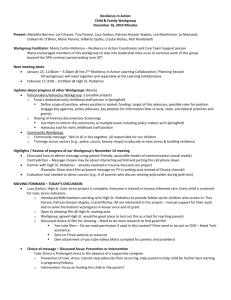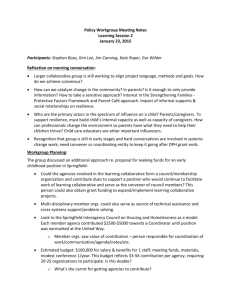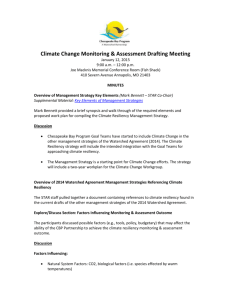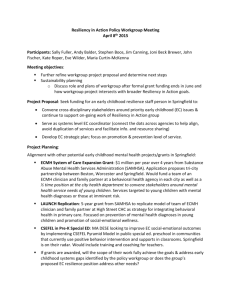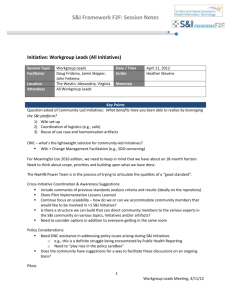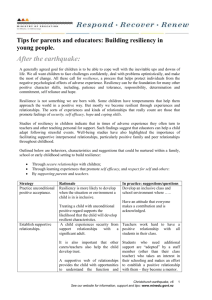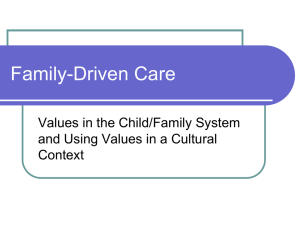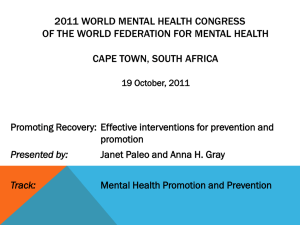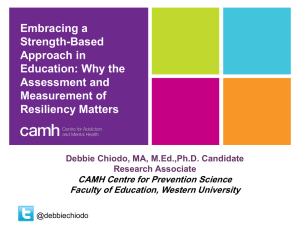November 14, 2014
advertisement
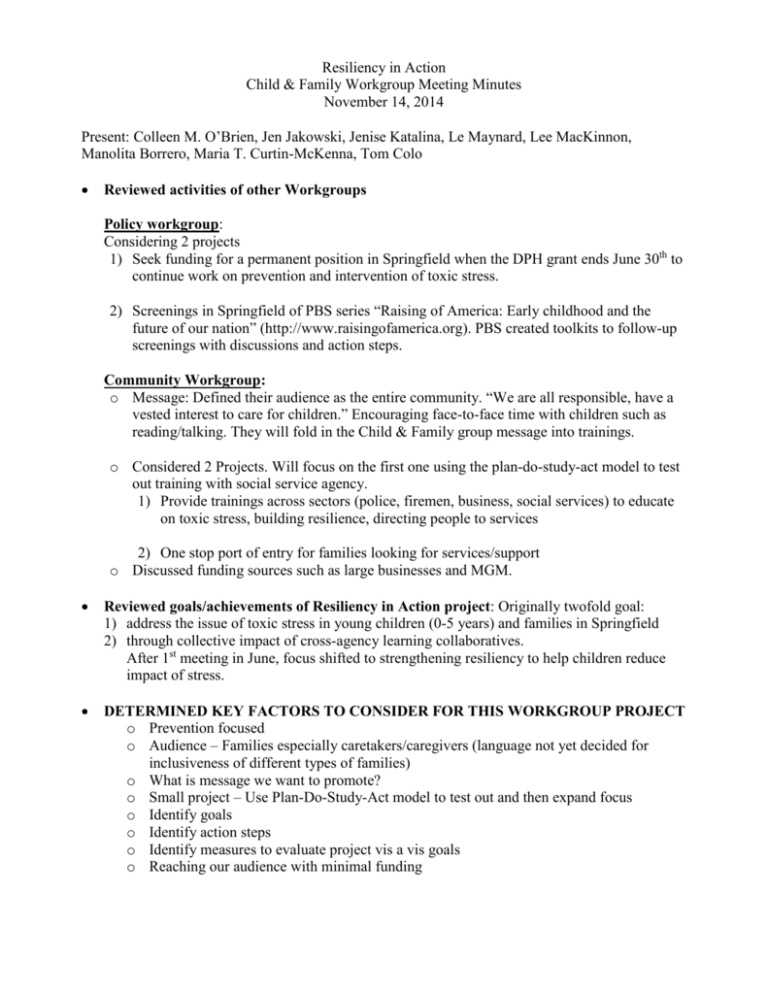
Resiliency in Action Child & Family Workgroup Meeting Minutes November 14, 2014 Present: Colleen M. O’Brien, Jen Jakowski, Jenise Katalina, Le Maynard, Lee MacKinnon, Manolita Borrero, Maria T. Curtin-McKenna, Tom Colo Reviewed activities of other Workgroups Policy workgroup: Considering 2 projects 1) Seek funding for a permanent position in Springfield when the DPH grant ends June 30th to continue work on prevention and intervention of toxic stress. 2) Screenings in Springfield of PBS series “Raising of America: Early childhood and the future of our nation” (http://www.raisingofamerica.org). PBS created toolkits to follow-up screenings with discussions and action steps. Community Workgroup: o Message: Defined their audience as the entire community. “We are all responsible, have a vested interest to care for children.” Encouraging face-to-face time with children such as reading/talking. They will fold in the Child & Family group message into trainings. o Considered 2 Projects. Will focus on the first one using the plan-do-study-act model to test out training with social service agency. 1) Provide trainings across sectors (police, firemen, business, social services) to educate on toxic stress, building resilience, directing people to services 2) One stop port of entry for families looking for services/support o Discussed funding sources such as large businesses and MGM. Reviewed goals/achievements of Resiliency in Action project: Originally twofold goal: 1) address the issue of toxic stress in young children (0-5 years) and families in Springfield 2) through collective impact of cross-agency learning collaboratives. After 1st meeting in June, focus shifted to strengthening resiliency to help children reduce impact of stress. DETERMINED KEY FACTORS TO CONSIDER FOR THIS WORKGROUP PROJECT o Prevention focused o Audience – Families especially caretakers/caregivers (language not yet decided for inclusiveness of different types of families) o What is message we want to promote? o Small project – Use Plan-Do-Study-Act model to test out and then expand focus o Identify goals o Identify action steps o Identify measures to evaluate project vis a vis goals o Reaching our audience with minimal funding Additional issues discussed o Why re-invent the wheel when there may be effective projects/materials to use (e.g. Strengthening Families protective factors) o Reaching out to families - Meet them “where they’re at” to deliver message. Majority of parents may not watch PBS. Probably use social media. Discussed use of cell phone, Apps, Twitter (e.g. an App of a parent playing with their child). May need to ask a teen about the most current social media format. o Discussed how this may be effective but is also contradictory to what we considered in October – Parents on cell phones are not looking at their child. o Discussed delivering message via TV in places where parents are “trapped”, such as pediatric waiting rooms. Discussed partnering with High St. Pediatrics. They are conducting survey of wellbeing of young children, including issues of stress and toxic stress and training providers o Find/create a short film with 1 message TBD (e.g., talking to your young child after violence occurs in community.) Include a message to talk with pedi/nurse about what you watched, concerns about social-emotional development of child. Resources. o Request permission to show it in pedi waiting room. o Measure results by number of parents who talk to pedi/nurse o Start small. o Project may develop life of its own with Baystate taking lead by promoting their work on Toxic Stress to other pediatric offices, including showing message-related films in the waiting room. Timeline of Resiliency in Action grant and workgroup activities o DPH funding ends June 30th. o Hope is that the collaborative groups and projects will continue beyond June 30th. Funding o Grant has a small fund for projects. o Discussed tapping the colleges/schools for technical assistance o Le Maynard recommended approaching community service organizations such as Kiwanis Club for small grants. Need to have a project in mind to present to them. Samples of projects by other groups in the US and Canada were distributed (See attachments to the email with these meeting minutes.) Maria acknowledged that the task of this group is challenging – To define what our charge is, our goals, the audience and how will design a collective impact project that will have an impact. We have definitely made progress. For our next meeting: Do some research. Email Maria if you find something. o What short, parent-friendly film can you find about childhood stress, resiliency, talking to your child about violence, etc. o Play with a creating a message about prevention and emotional development of young children Next meeting: December 16, 9:00 – 10:30am. Place TBD.
